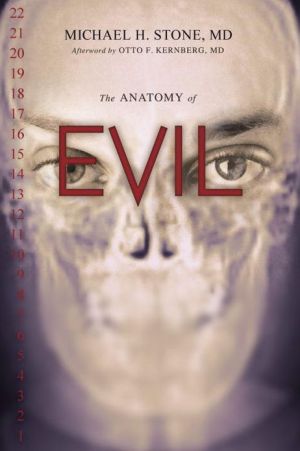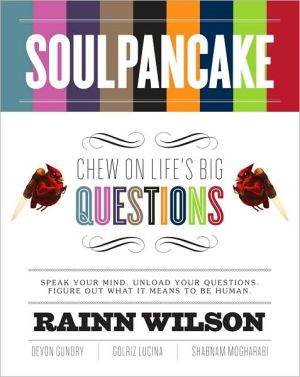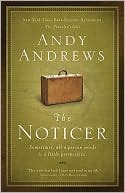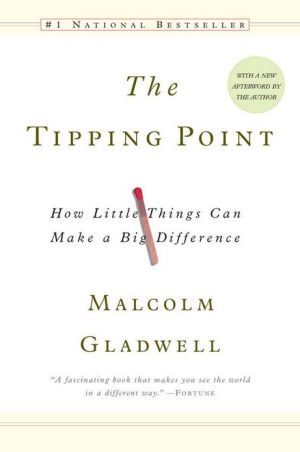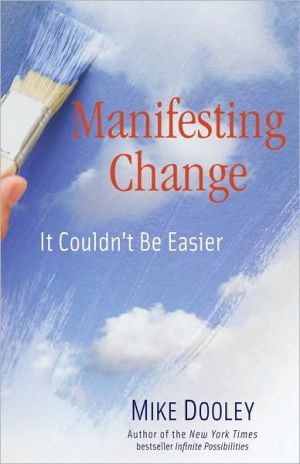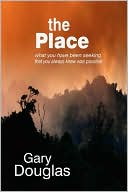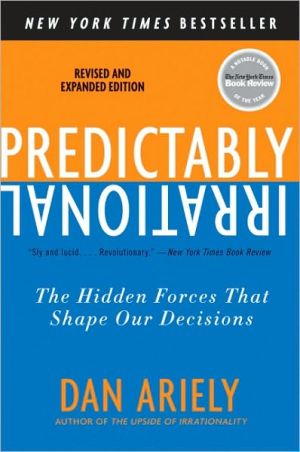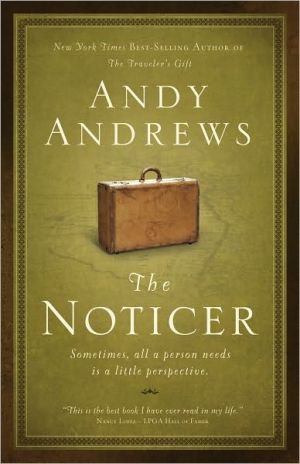The Anatomy of Evil
The crimes of Charles Manson, Ted Bundy, Jeffrey Dahmer, John Wayne Gacy, Dennis Rader, and other high-profile killers are so breathtakingly awful that most people would not hesitate to label them "evil." In this groundbreaking book, renowned psychiatrist Michael H. Stone—host of Discovery Channel’s former series Most Evil—uses this common emotional reaction to horrifying acts as his starting point to explore the concept and reality of evil from a new perspective. In an in-depth discussion of...
Search in google:
The crimes of Charles Manson, Ted Bundy, Jeffrey Dahmer, John Wayne Gacy, Dennis Rader, and other high-profile killers are so breathtakingly awful that most people would not hesitate to label them "evil." In this groundbreaking book, renowned psychiatrist Michael H. Stone-host of Discovery Channel's former series Most Evil-uses this common emotional reaction to horrifying acts as his starting point to explore the concept and reality of evil from a new perspective. In an in-depth discussion of the personality traits and behavior that constitute evil across a wide spectrum, Dr. Stone takes a clarifying scientific approach to a topic that for centuries has been inadequately explained by religious doctrines. Basing his analysis on the detailed biographies of more than 600 violent criminals, Stone has created a 22-level hierarchy of evil behavior, which loosely reflects the structure of Dante's Inferno. He traces two salient personality traits that run the gamut from those who commit crimes of passion to perpetrators of the worst crimes-sadistic torture and murder. One trait is narcissism, as exhibited in people who are so self-centered that they have little or no ability to care about their victims. The other is aggression, the use of power over another person to inflict humiliation, suffering, and death.Stone then turns to the various factors that, singly or intertwined, contribute to pushing certain people over the edge into committing heinous crimes. They include heredity, adverse environments, violence-prone cultures, mental illness or brain injury, and abuse of mind-altering drugs. All are considered in the search for the root causes of evil behavior. Whatdo psychology, psychiatry, and neuroscience tell us about the minds of those whose actions could be described as evil? And what will that mean for the rest of us? Stone discusses how an increased understanding of the causes of evil will affect the justice system. He predicts a day when certain persons can safely be declared salvageable and restored to society and when early signs of violence in children may be corrected before potentially dangerous patterns become entrenched.WHAT PEOPLE ARE SAYING:"In this fascinating and compelling work, The Anatomy of Evil, Dr. Michael Stone leads the way on a dark and irresistible journey. Down each path and around every corner the Face of Evil is ever changing-everything from the fresh 'innocent' faces of the seemingly benign Karla Homolka and Paul Bernardo... To the malicious and haunting faces of Charles Manson and Richard 'The Night Stalker' Rameriz...Powerful and riveting!" —Carol Rothgeb-Stokes, author of Hometown Killer and No One Can Hurt Him Anymore"The present volume, I believe, is destined to become a classic in psychiatry, and a landmark in our understanding of severe antisocial behavior and criminality." —Otto F. Kernberg, MD, Professor of Psychiatry in the Joan & Sanford I. Weill Medical College/Cornell University; Director, Personality Disorder Institute, New York Presbyterian Hospital/Weschester Division; Past President of the International Psychoanalytic Association "The fluid, articulate style of this studious yet accessible volume attests to the impressive breadth and depth of Dr. Stone's knowledge about the people who've committed the world's most evil acts. Using psychology, religion, philosophy and neuroscience, he dissects this complex concept in the form of case study and presents a concise and profound analysis. A great read for scholars and lay people alike. You won't forget these stories! It's everything you ever wanted to know about evil but were too afraid to ask." —Dr. Katherine Ramsland, professor of forensic psychology and chair of social sciences at DeSales University; author of Inside the Minds of Serial Killers and The Human Predator
The ANATOMY of EVIL\ \ By MICHAEL H. STONE \ Prometheus Books\ Copyright © 2009 Michael H. Stone\ All right reserved.\ ISBN: 978-1-59102-726-3 \ \ \ Chapter One\ EVIL IN PEACETIME\ Canto II, ll. 7-12\ O muse, o alto ingegno, or m'aiutate; O mente che scrivesti ciò ch'io vidi, Qui si parrà la tua nobilitate. Io cominciai: Poeta che mi guidi guarda la mia virtù s'ell' è possente prima ch'a l'alto passo tu mi fidi.\ O muse, o lofty mind, now help me; O memory that wrote down what I saw, here will your nobility appear. I began: "Poet who are my guide, consider my strength, if it is powerful enough before you entrust me to the deep pass."\ I will be concentrating throughout these pages on evil in peacetime in its various forms and degrees. I am using "peacetime" here as a shorthand term for acts committed either by individuals or by several perpetrators working together. There are plenty of evil acts carried out by rioters, members of opposing street gangs, political protesters and the police who try to subdue them, and the like. All of these situations can be considered something just short of a declared war, but the individuals involved in the clash are nameless and are usually acting more as people swept up in the heat of the moment. In a riot, for example, the sense of personal responsibility for whatever one side does to the other-and that may include brutality of the most gruesome and shocking sort-is pretty much lost. Questioned later, one at a time, the participants may say, "We did it," rather than "I did it." Or they might say, "Well, they started it!" The point here is that in a riot, people from ordinary life-with no criminal record, who had no forethought as to what they were going to do and no idea they were even going to get involved-are seldom disturbed or vicious. A terrible situation arose, forces got unleashed in otherwise ordinary law-abiding folk who never dreamed themselves capable of pummeling or maiming others, and lo and behold, they ended up doing things that the bystanders and commentators later on called "evil." I don't feel there is much we can learn about the evil that may emerge in the crowd, the mob, the gang-except to say that in extreme circumstances almost all of us can take part in regrettable actions that would (or should) later move us to shame and remorse.\ Cultural and historical factors count in the equation of what we regard as evil in times of peace. Some actions in the past by those in positions of great power were seen-by them-as necessary, even though many at the time felt those actions were evil. Reading about these events centuries later, we also regard them as evil. History is filled with examples of what we now, looking back, regard as evil-as when general or kings order bloody punishments, including torture, to "wrongdoers" as a warning to the populace. England's King Henry the Eighth provides one such example. Desperate for a son and heir, he had his first marriage annulled (never mind that Catherine of Aragon had given him a daughter, later to be known, ironically, as Bloody Mary). After his second wife, his then beloved Anne Boleyn, miscarried what would have been his son and heir, he had her beheaded though she gave him a healthy daughter (the future Elizabeth I). He had his fifth wife, the teenaged Catherine Howard, beheaded when she was caught cheating on him. Was there evil here? Certainly not in the executioner: he was just doing his job, one that he did as efficiently and painlessly as that job allows. As for the beheading of Catherine Howard, some kings look the other way at an adulterous mate. Henry was not of that mold. His fury was at least understandable to us, though we may feel he went a bit too far. Perhaps there was evil in beheading Anne (and her equally innocent brother, George), since he did this for selfish motives. To weasel out of a marriage that seemed unlikely to bear (male) fruit, Henry, exercising his powers, compelled his inner circle to conjure up tales of adultery and treason about his guiltless wife, Anne, and her brother. There were no poll takers in sixteenth-century England, so we don't know how many would have voted (anonymously!) that Henry's action here had been "evil." As for Catherine Howard, very few in those days would have objected to her beheading. Her public execution was anyway meant as an act of terror, warning anyone with eyes to see that they had best not take liberties with their king. And Henry was not a mad monarch in any case. What he did was in keeping with his personality: he could be loving to those he cherished and who respected him, yet, insistent upon having his way, brutal to those who crossed him. Perhaps to justify his ways, he took a page from Machiavelli's The Prince, written when Henry was twenty-two and filled with advice for how a ruler should rule and when the ruler, to restore order, must be harsh or even cruel.\ Notwithstanding the above examples, the people I want to draw attention to throughout these pages are people the great majority of whom have acted as individuals and who have done the kinds of things to others that most people would call evil. What drew my own attention to this particular subject was a murder case some twenty years ago, in which I was called to serve as an expert witness in a court of law. The defendant had stabbed to death his pregnant wife and children, so there was little hesitation in the press or in the minds of most people who knew of the case in referring to the crime as "evil." As for motive, this man had felt threatened with exposure: he had cheated on his wife and had done some other disreputable acts-but the murder of his family had an unplanned, "spur-of-the-moment" quality.\ The case stimulated my interest in murder. I thought it might be useful if I could get the members of the jury to think of an imaginary line along which different kinds of murder (and different murderers) could be categorized, starting with the most understandable and least horrific murders and stretching all the way to those that were the most mind-boggling and horrific. This was the beginning of the scale that I was to call the "Gradations of Evil." I began to read full-length biographies about famous murderers-the ones found in the true-crime section of a bookstore-because these books generally give a great deal of personal detail about each murderer. There would be material about the childhood background of the man or woman in question, about what the family had been like, about what crimes may have preceded the murder. And I would learn whether the murderer abused drugs or alcohol, was mentally ill, had suffered a head injury when young, or had tortured animals or set fires. As a psychiatrist with a specialty in disorders of personality, I combed through each biography for impressions and reminiscences of the people who knew the murderer-friends, relatives, and also lawyers, doctors, and (if the person had been in prison) jailers and other inmates-who could give a picture of what the murderer had been like. Was the person shy or outgoing, able to care about others, or totally self-centered, open or secretive, candid or habitually lying, calm or hot-tempered, forgiving or vengeful, submissive or domineering? Was the person jealous, greedy, violent ...? Were there other malignant personality traits? I paid close attention to whether the author of the true-crime book used the word evil in describing either the crime or the murderer. Was the word used in other accounts about the same killer in newspapers and magazines? And if so, was that the impression of the writer, or of the police, the judge, and the prosecutors, or of the relatives of the victims? Above all, what was the special quality that had prompted anyone to say the word evil: Was it the cunning way used to lure the victim? The callousness of the killer? The extreme suffering endured by the victim?\ My idea was to give the jury a better grasp of who the murderer really was in everyday life and of where the murder fit along this imaginary line from least to most horrifying and inhumane. Could I identify, in other words, divisions, or "gradations" that made one type of murder more evil-seeming than others, in the opinion of the authorities and the public? When I gave my impressions to the jury, I had not as yet read more than a few dozen biographies of murderers. There were not so many different natural divisions I could make along that line, but I felt they could be put into perhaps half a dozen such categories, or "compartments." As dreadful as it was to murder one's pregnant wife and two small children, the husband had acted impulsively and had not subjected his family to torture. So this crime, though it was called evil, struck me as less deplorable than, say, the serial murders of children that had been committed in the mid-1960s by Ian Brady and his girlfriend-accomplice, Myra Hindley, in the English moors. Brady had first strangled his victims and had then recorded their screams on a tape recorder, for use later as a kind of aphrodisiac for him and Myra. That was torture and callousness of a sort that went beyond anything I had heard of in the crime literature up until that time. That was twenty years ago. Worse was to come. But at the time, I placed that example at the far end of my evolving scale: evil at the extreme.\ At the other end, I made a category for people who had killed someone but whose action could be viewed as a justified homicide and therefore not technically murder (which refers only to unlawful killing), let alone "evil." This category would "anchor" my scale at the absolute lowest point, where the notion of evil disappeared. The case that attracted my attention as I was creating the scale had occurred in Wyoming: a teenage boy, Richard Jahnke Jr., had killed his abusive father. Richard Sr., besides constantly beating his son and daughter, whipping his wife, and going around the house with a pistol pointed at them, also sexually molested his daughter. Sixteen-year-old Richard Jr. saw no way of escaping the abuse: his father, after all, was an agent for the IRS. The mother lacked the courage to admit her husband was abusing the entire family. Richard had gone to the authorities, but they turned a deaf ear (as is quite common in such cases). So in November of 1982, Richard Jr. shot his father to death with a rifle. The case shows how our ideas about right and wrong, and about evil, can undergo change over the generations. Richard's act clearly violated the Bible's fifth commandment: Honor thy father and thy mother, as well as the seventh: Thou shalt not kill. The punishment in biblical times for killing one's father or mother was not light: such a child "shall surely be put to death." Even cursing one's parents or stubbornly disobeying them could get a child stoned to death "by the men of his city"-as a stern warning to any like-minded youngster.\ I am unwilling to believe that there were no abusive parents in Moses' time; however, no allowance was made then or for the next three thousand years for that contingency. Even in 1982 Richard was convicted of voluntary manslaughter and was sentenced to five to fifteen years in prison. The governor of Wyoming, a man ahead of his time, quickly commuted the sentence to time served at a state-run boy's school "till he was twenty-one" and where Richard would win a conditional release in less than a year. So what fifty years ago would have been a clear-cut murder case was, in 1982, still not considered close to an instance of "justified homicide." The law has begun to recognize that severely abused children and wives sometimes have little recourse except to kill their more physically powerful adversary-the husband or father-using surprise or deception. But any kind of planning or premeditated element has always earned, until very recently, a first-degree murder conviction. This, despite the law having a vague grasp of the fact that a hundred-pound woman, when under murderous attack by her two-hundred-pound husband, has no real chance of winning or even surviving. If escape is impossible, she (or a child under similar attack) must take the aggressor by surprise. The Jahnke case and those similar to it became my "zero-point" for what was to become my Gradations of Evil Scale.\ So far my scale had three points: the two extremes and a case in the middle, where there was evil but no torture and little if any planning. Before showing my rudimentary scale to the jury, I added a few more points: one for jealousy murders, another for men and women who clearly had schemed-with "malice aforethought," that is, with "guilty mind" and prior intention-to kill someone they regarded as an obstacle to some important goal. And then, an additional point for serial killers who, unlike Ian Brady, did not engage in torture.\ Jealousy murders, the sort where someone surprises a spouse in bed with a lover and then kills the spouse or the lover (or both), are the most understandable to the public and the most likely to earn a measure of sympathy-even though the public recognizes that the murder was morally indefensible and wrong. People reacting to such a story are likely to think: If I were in your place, I'd do the same, or I'd at least feel like doing the same. Murders of this sort are considered the least "evil" or perhaps not evil at all. People committing a murder prompted by jealousy feel they are engaged in a kind of "righteous slaughter," where the killing becomes an antidote to the unbearable humiliation and emotional pain of the betrayal. We might be moved to say that the act was evil, but the person was not. The example I had used at the time was Jean Harris's murder of her lover, the "Scarsdale Diet" doctor, Herman Tarnower, when she discovered he had been cheating on her with another woman.\ For a schemer driven by malice aforethought, I used the case of Steven Benson. The son of sixty-three-year-old tobacco heiress Margaret Benson, Steven had racked up big losses in a number of failed business ventures. He had embezzled several millions from his mother already, and she was about to have her books examined to see where the shortages were coming from. For Steven, that lent some urgency to the problem. The way he figured he could even the financial balance sheet was to accelerate his inheritance, so to speak, by advancing the date of his mother's death ahead of God's schedule. To that end he planted two pipe bombs in the car she was about to take a ride in. His mother died in the explosion, as did a nephew; his sister survived, badly burned. Benson, convicted two years later, collected two life sentences rather than the ten million dollars he was counting on. Because of the diabolical planning that went into Benson's scheme (if his sister had died too, then all the heirs except himself would have been put "out of the way"), he belongs to a higher (i.e., worse) spot on the evil scale-higher even than the man who killed his family.\ I saw the need for another category, one that covered crimes people found more disturbing than the murder of one's mother for monetary gain but less disturbing than a serial killer who tortured his victims. I chose Ted Bundy, since he was a serial killer with many victims, but he did not subject them to torture.\ At this stage of its development, the scale had some six points, or compartments. If we put them next to each other, with the most horrific cases at the far right-the ones people would just about unanimously find "evil" and somehow worse than those in the compartment just to the left-we would end up with a simple scale that would look something like this:\ A B C D E F\ Justified Jealousy- Murder to Murder to Serial murder, Serial homicide, driven get someone get someone repetitive murder, not evil and other out of the out of the vicious acts, with torture at all impulsive way, without way; malice but without the main murders planning. aforethought torture goal\ I chose to focus on murder initially, not just because the case I was asked to comment on for the jury happened to involve murder, but because people are quicker to use the word evil when they hear about a murder than if they hear about a civil crime such as fraud. And the more diabolical the murderer (meaning the more scheming and malice involved) or the more intense the suffering of the victim, the more readily we tend to add the word evil to our description of the event.\ (Continues...)\ \ \ \ \ Excerpted from The ANATOMY of EVIL by MICHAEL H. STONE Copyright © 2009 by Michael H. Stone. Excerpted by permission.\ All rights reserved. No part of this excerpt may be reproduced or reprinted without permission in writing from the publisher.\ Excerpts are provided by Dial-A-Book Inc. solely for the personal use of visitors to this web site. \ \
Introduction 9Ch. 1 Evil in Peacetime 27Ch. 2 Crimes of Impulse: Murders of Jealousy and Rage 53Ch. 3 Other Crimes of Impulse: Emphasis on Antisocial Persons 85Ch. 4 Murder on Purpose: The Psychopathic Schemers 115Ch. 5 Spree and Mass Murder: Evil by the Numbers 141Ch. 6 The Psychopath Hard at Work 165Ch. 7 Serial Killers and Torturers 195Ch. 8 The Family at Its Worst 243Ch. 9 Science Looks at Evil 285Final Thoughts 331Afterword Otto F. Kernberg Kernberg, Otto F. 357Acknowledgments 361Notes 363Index 405
